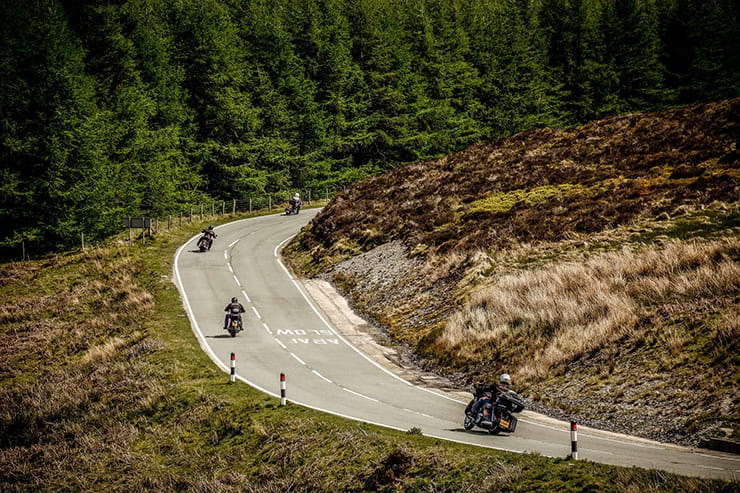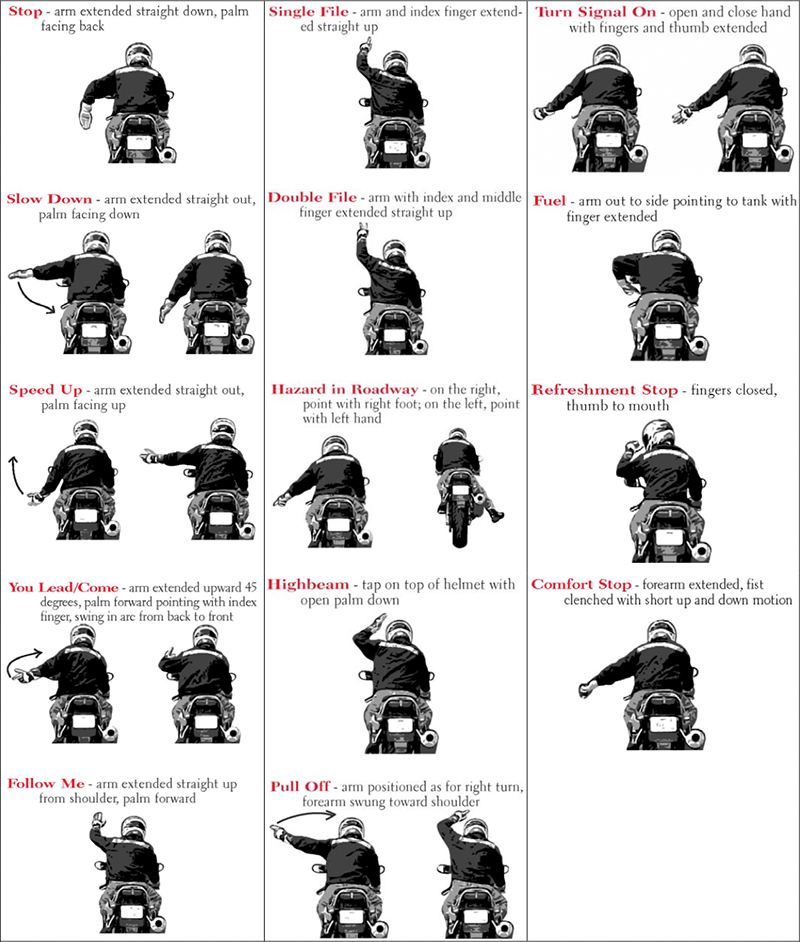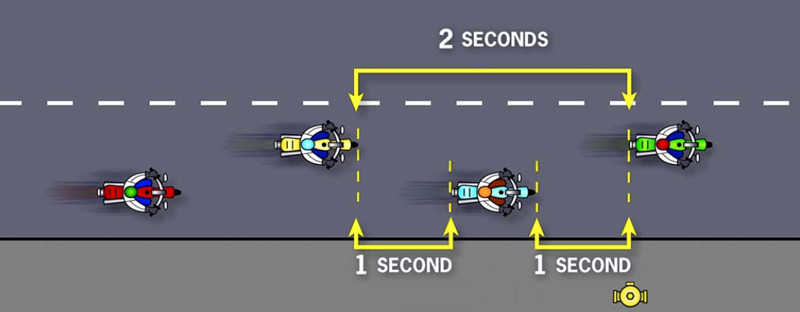Riding in a group can be great fun or stressful!
With group motorcycle riding, there’s no book of knowledge that you and your group can set your rules by.
With so many different people and personalities, boundaries will inevitably be pushed, and tempers will eventually be frayed.
These are our top tips for group motorcycle riding to keep things running as smoothly as you imagined!

Group Size
While it may seem appealing to have a group of 20 companions touring together, this approach is often impractical.
In reality, dividing the group into smaller sub-groups leads to a more enjoyable experience. Instead of having 20 riders competing for position and visibility, forming groups of 3-4 riders is far more effective.
Many groups adopt a drop-off system where riders stationed at junctions or turns, allowing everyone to ride at their own pace. Although this method can be effective, particularly in advanced riding groups, it not as efficient as traveling smaller, more cohesive groups.
It is important to note that riders the back of a large group must ride faster than those at the front, which could potentially lead to mistakes and accidents.
Agree Not To Overtake (Each Other)
There are two common instances when spills occur during group rides.
The first is on bends, often caused by riders at the back of the group pushing beyond their skill level keep pace with those at the front.
The second involves overtaking. In large groups, faster riders can frustrated with slower riders who hesitate to overtake a slow-moving vehicle ahead. Eventually, a faster rider may attempt to take both the slower rider and the vehicle simultaneously—just as the slower rider begins their own overtaking manoeuvre.
This frequently ends in collisions, as no one is certain of others’ intentions. To minimize these incidents, overtaking within group should be prohibited. Instead, organizing riders into separate groups based on speed—faster riders in one and slower riders in—ensures a safer and experience for all.
Communications
Group rides are most effective when common method of communication is established.
Larger groups can utilize hand signals which be relayed throughout the group, or employ drop-off system as mentioned.
Smaller groups may also hand signals, though inter systems might prove to be more suitable option.
Groups of up to six riders do not require any form of communication, which often appreciated by all participants.

Ride In A Staggered Formation
Riding in a staggered formation is beneficial for all participants. It compacts the group, making it easier to remain cohesive. Additionally, it occupies less road space, demonstrating greater consideration for other road users.
Furthermore, this formation enhances the front visibility for each rider in the group.
At night, the most visible bike should be positioned at the rear to enable the leaders to ensure the group remains together.

Staggered formation is fundamental to group riding. The Motorcycle Safety Foundation recommends maintaining a two-second gap between you and the rider directly in front of you, and roughly a one-second gap between you and the next rider in the formation. At slower speeds, that means tightening the ranks. Graphic courtesy the Motorcycle Safety Foundation.
Learn To Compromise
Regrettably, you not the focal point of the group.
It is acceptable to propose something such as a change in route or a stop at attraction you are eager to visit. It’s crucial to remember not to insist on these suggestions. Present your idea to the group and collectively decide on the best course of action.
In my experience with motorcycle riding, most participants are generally agreeable and willing to make minor adjustments the route to accommodate others, so is no need assert yourself.
Prepare To Travel Alone
While it is unfortunate to begin on a negative note, it is essential that your planning includes a contingency plan. Group motorcycle riding can often present challenges. You may find yourself not meshing well with the group, or the riding style might not align with your preferences—be it too fast, too slow, or overly risky.
Additionally, there could be a single participant whose significantly disrupts your experience and impacts the trip..
In any of these situations, there may come moment when it becomes necessary to separate from the group, leaving you with two choices: either return home or proceed with the tour independently.
Always have a way of getting home on your own, be that maps or sat nav!

Article written by Nige.
Last update: July 2025
Nige has toured most of the UK and Europe, he also commutes to work daily on a motorbike.
Nige is always happy to ride solo, with a pillion or two up.
We may receive a commission if you purchase a product using the affiliate links on any page of this website. This is at no cost to the purchaser, however does support our website and helps us to continue to build with more great content.
